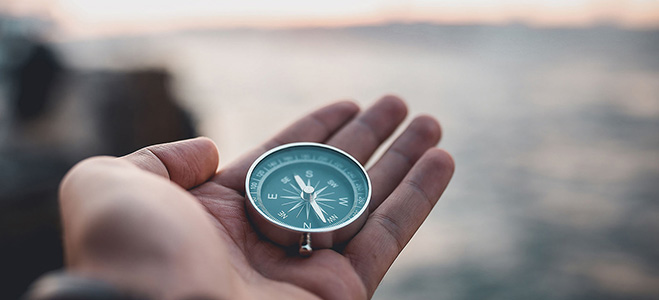There’s no question that AI and automation are transforming how we work. From chatbots and generative AI to predictive tools, technology is helping organizations to speed up tasks, draft content, and make more informed decisions. Essentially, it’s helping businesses accomplish more with less.
So, where does that leave us? You know, the humans.
The truth is, no matter how quickly technology evolves, the most valuable traits found in any organization are human ones. Sure, AI may be efficient, but it can’t build trust, feel empathy, connect, or think creatively as people do.
Let’s explore what can give your organization an advantage in a world that’s becoming increasingly digital and learn how you can sharpen your skills to stay relevant.
What is the human edge?
It wasn’t that long ago that the most successful employees would stand out because of their ability to analyze data or optimize processes. Now, those same tasks can likely be handled more efficiently by technology.
But don’t worry. Humans still have a unique advantage: a new set of skills ideally suited for navigating the unpredictability of the real world.
The human edge is everything that AI and automation can’t do that people can. It’s the ability to perform skills like thinking critically, feeling and expressing empathy, and being creative and original.
Often, we call these soft skills. But in a modern workplace, these skills are critical and powerful. They help organizations build culture, nurture and grow relationships, and innovate. And these skills will likely continue to be valuable even as technology continues to advance.
Let’s dig into them.
Creativity
AI can spit out ideas based on past or trained data. It can remix existing content. But what it can’t do is think outside the box to come up with fresh ideas and concepts. It can generate content, ideas, or designs, but these often are generic or formulaic and seem to fall a bit flat. The originality, emotional context, and nuance that bring an idea to life must come from a person. Someone who can take what’s on a page and make it come alive.
Consider how you tailor strategies or presentations for a variety of audiences. AI can help outline the basic approach, but it takes your humanness to personalize it. Each organization, customer, or audience is unique, with their own culture, expectations, work style, or approach to receiving messages. That’s where human creativity adds tremendous value.
Creativity tends to flourish when you allow yourself to explore, be curious, and work through different versions and problems. And this can be lost if you rely too heavily on technology to think for you.
Human connection
One of the biggest challenges in today’s digital era is staying human. Between screen time, remote work, and being exposed to AI-generated everything, it’s easy to lose touch with the people side of work.
But traits and skills like empathy, relationship building, and emotional intelligence are key drivers of success.
Human connection is what brings people to a business. It builds trust between a leader and their team. It helps your colleagues and clients feel heard and valued. It provides that sense of camaraderie with teammates and those working around you. These are things that a machine can’t replicate.
And best of all, you can start using these skills today. Simply ask a colleague how they’re doing, practice active listening, or create a safe environment for your team to share ideas.
Critical thinking
Many of these AI-driven tools are great for tasks such as gathering information, making suggestions, or summarizing key points. However, a decision maker it is not. It can’t personalize content to your audience, understand what matters the most, or adjust for context.
That’s where your critical thinking skills come in.
Only a human can ask questions like: Does this help us serve our audience, customers, or citizens more effectively? Does this align with the message we’re trying to send? What else do I need to consider? What could be the unintended impacts?
This skill is poised to become even more critical to develop as AI progresses. You can’t take its outputs at face value. What sets you apart is your ability to pause, assess, and elevate your work beyond what technology can offer.
Adaptability and flexibility
Humans can operate in the grey areas, which is a good thing because work isn’t always black or white.
If there’s one thing you can be certain of, it’s that things are going to change. Priorities shift overnight. New tools are being developed every day. What happened last quarter may not be relevant tomorrow. Your ability to adapt to these shifts is what separates you from the machines.
Adaptability means learning how to pivot, switching up your approach, and understanding new information in real time. This kind of flexibility is something you can develop by asking questions, being reflective, and being willing to unlearn — and then relearn — different ideas and ways of doing things.
Create space for soft skill development
For these skills to strengthen, there needs to be a safe environment where they can develop. That means creating safe spaces that encourage your team to speak up, share ideas, ask questions, and co-create. A collaborative space, with whiteboards or digital brainstorming tools, can help people (and machines) build ideas alongside each other.
When your team feels supported and safe, they’re more likely to contribute ideas, be creative, and think critically. When these are shared in a collaborative space, they’re likely to grow their emotional intelligence and produce outputs that are thoughtful and innovative.
To support this, your organization needs to make sure the space and tools are available, and that your culture sends a clear message that all voices matter.
You are still at an advantage
Technology will keep growing. That’s a given. But that doesn’t mean you have to become a robot to keep up. In fact, the opposite is true.
Your ability to think creatively and critically, respond with empathy, and adapt to change is what will set you apart. These are the traits that build relationships, keep clients happy, and drive results. Automation tools are just that, another tool in your toolbox.
So, instead of trying to outwork automation and AI, double-down on what makes you who you are






